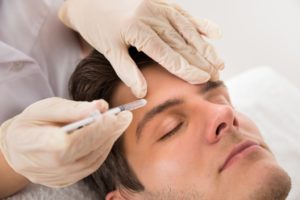As the COVID-19 pandemic continues to move across the globe, healthcare systems are in a state of crisis. The health threats of COVID-19 are causing people to delay care, preventing them to receive proper treatment for their illnesses and chronic ailments. This includes dermatological care that tackles concerns about the skin, nails, and hair conditions.
As dermatology clinics re-open amid the pandemic, patients are still wondering about the safety of getting in-office care. Obviously, visiting healthcare offices would mean getting into contact with other patients and other healthcare staff, and these face-to-face interactions can lead to uncertainties about possible health risks.
There are still plenty of reasons to visit a dermatologist during a pandemic. A large number of skin conditions can be experienced while at home, such as allergies, rashes, and rough patches. Even frequent wearing of masks can also lead to skin issues and the so-called ‘maskne’ or acne breakouts because of face masks. The rise of skincare trends is also on the rise, and dermatologists can serve an aesthetic purpose through Botox and dermal filler treatments.
Dermatologists understand their patients’ concerns when receiving treatment during a pandemic. To keep their patients safe while providing the care they need, dermatologists and other skincare professionals are finding ways to make appointments safer and convenient. So if you’re planning to seek dermatological care anytime soon, here’s what you should expect on your next appointment.
Should I try teledermatology?
Even before the pandemic, dermatologists are already offering telehealth services to expand their practice and provide urgent care for emergency cases. Dermatology is a form of visual specialty, making it possible for telemedicine consultation.
Teledermatology offers an alternative method for dermatology consultation, where the physician and patient use technology to evaluate and resolve skin conditions. It diverts treatment from expensive care facilities and overburdened urgent care. Dermatology practices may offer two types of teledermatology: video visits and store-and-forward (SAF).
As the name goes, video visits use videoconferencing applications to allow virtual interactions between the healthcare provider and the patient. These visits work for patients with skin conditions, such as eczema and acne. Meanwhile, SAF involves uploading images of the skin issue and sending them to the care provider through e-mail, messaging applications, or patient portal. For instance, the patient may forward an image of their rashes to allow the dermatologist to evaluate the skin issue.
The American Telemedicine Association has issued practice guidelines for dermatology practices that offer teledermatology services. The document covers administration, technology, and clinical practice. In turn, dermatologists are required to follow the guidelines to ensure quality care to patients.

When should I receive immediate care?
Most dermatologists advise that patients should set an immediate appointment for severe skin conditions, such as changing moles or brown spots, nonhealing lesions or scabs, progressing rashes, and other signs of infection. If you’re experiencing any of these symptoms, you can set a video appointment for an initial assessment. From there, the dermatologist can tell you right away if a certain skin issue is harmless or requires immediate care.
Depending on the results of your video appointment, the dermatologist may request the patient to come to the office for a biopsy. Urgent skin conditions such as changing or new brown spots should be evaluated immediately. Similarly, if you spot a mole with changes in color, shape, symptoms, or size, the doctor may need to see it for signs of melanoma. For rashes, the severity of the condition may depend if it requires a virtual or in-person appointment.
Sometimes it may be difficult for the patient to know if a certain skin condition requires immediate assessment. According to dermatologists, it’s important to know the major red flags of severe skin conditions. These include skin conditions characterized by redness, pain, and inflammation, and signs of infection, such as pain, fever, pus, and red, swollen skin.
What are less-urgent skincare issues?
Cosmetic procedures are less-urgent treatments you can schedule at a later time. But you can also find dermatology practices offering these services, provided if the patient is in good shape. Voluntary procedures may include fillers, Botox, laser treatments, and mole removal.
Non-urgent skin conditions include acne, actinic keratoses, hair loss, rosacea, eczema, and psoriasis. Patients may schedule teledermatology visits for these types of concerns.
As COVID-19 restrictions slowly ease, people may expect dermatology clinics to re-open and incorporate strict safety guidelines for the welfare of the staff and patients. So if you’re having problems with a skin issue, it’s important to know your options about getting immediate care. Your trusted dermatologist can walk you through the entire treatment process while giving you peace of mind.





